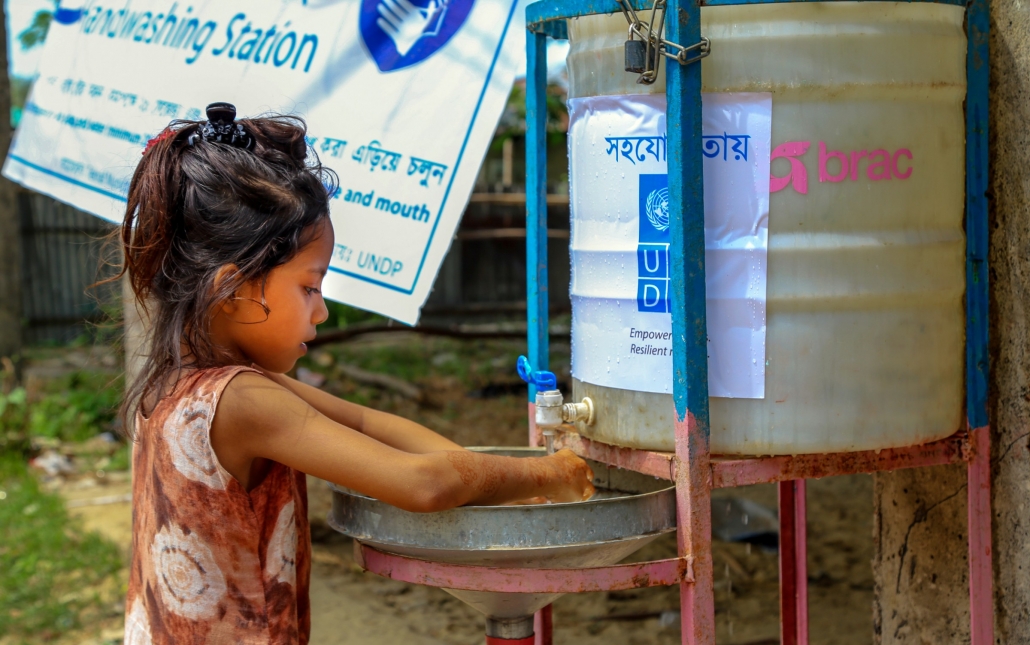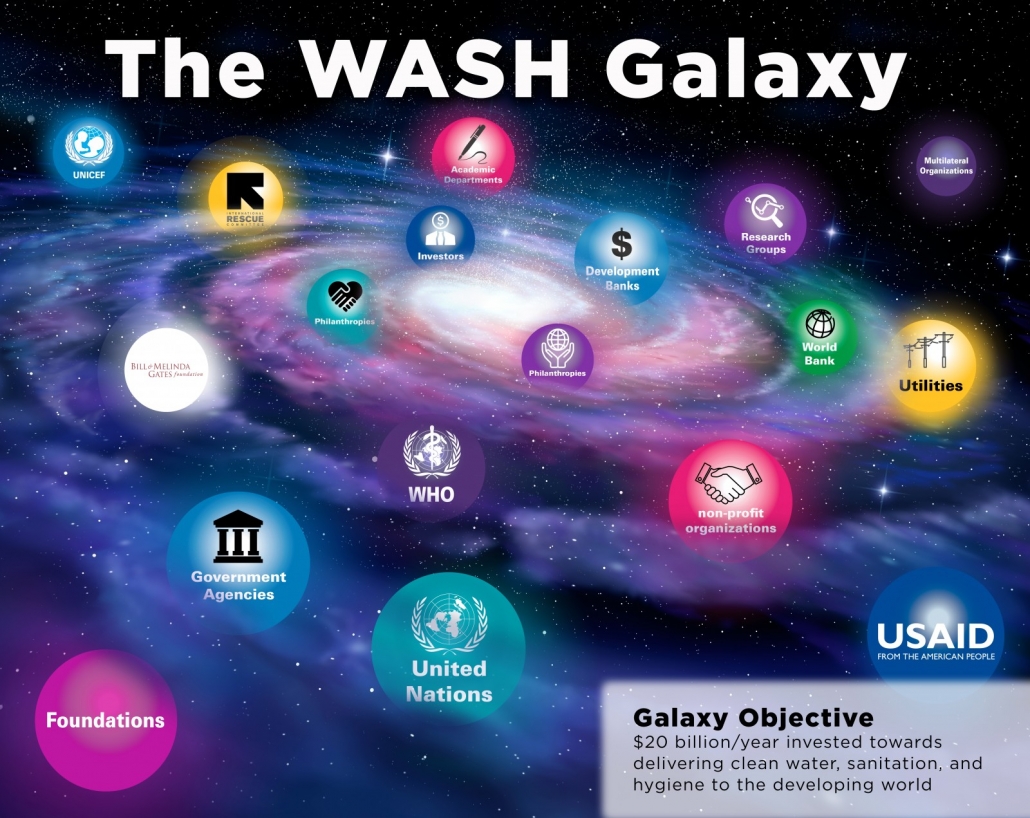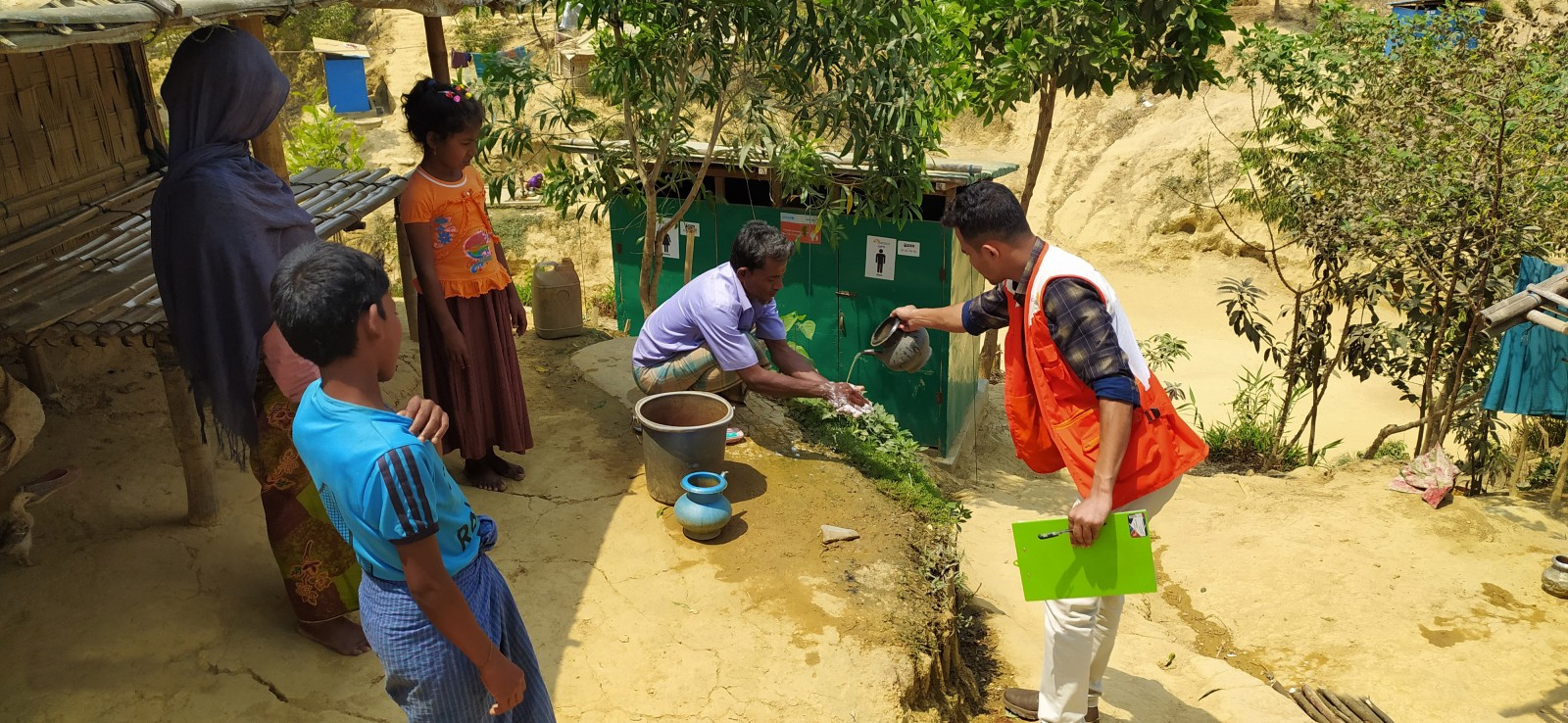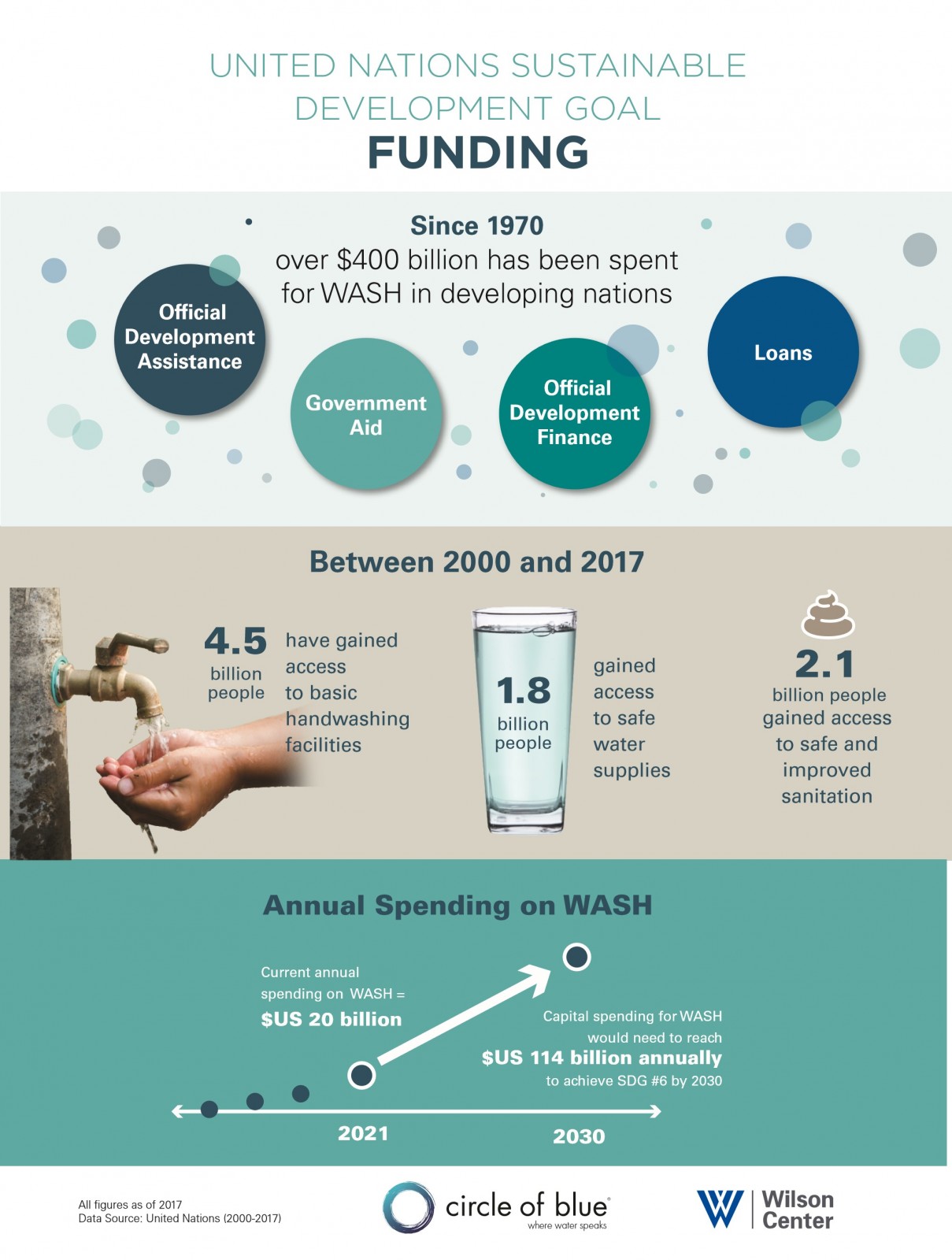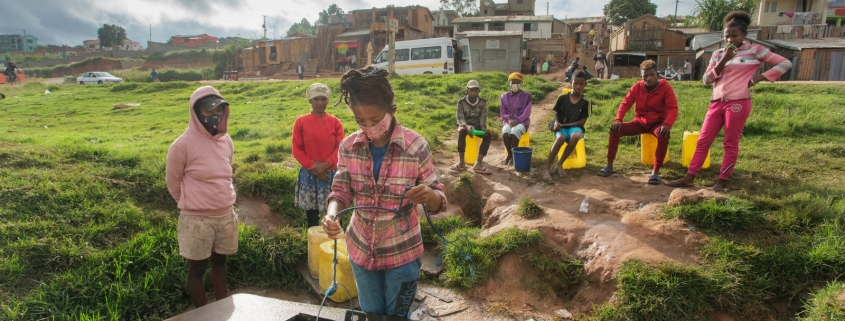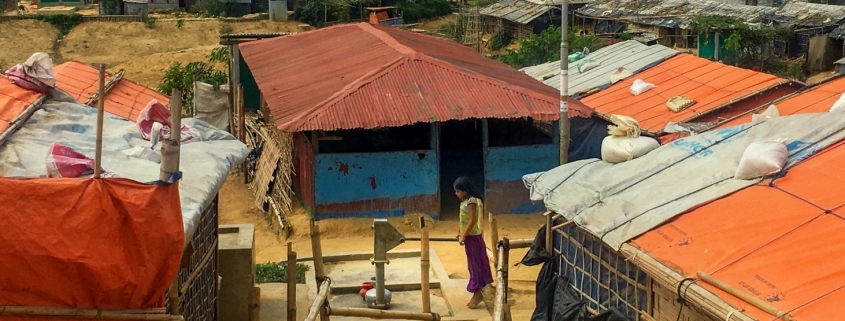Innovation in Financing Brightens WASH Galaxy
Funding for water, sanitation and hygiene starts to arrive faster, with clearer requirements
This article, the second in a series on the global status of universal access to water, sanitation, and hygiene, is produced through a collaboration between Circle of Blue and the Wilson Center, with support from The Hilton Foundation. This independent journalism does not reflect the views of the Conrad N. Hilton Foundation. Read the first article here.
Key Takeaways
- Even as official numbers seemed to point to a potential catastrophe, the actual effects of the pandemic on delivering water and sanitation to people who needed it were not nearly as dire.
- Over the last half-century, the WASH sector evolved into a galaxy of projects, programs, departments, idea centers, utilities, service companies, research groups, and consultancies devoted to delivering clean water, sanitation, and hygiene to the developing world.
- Capital spending for WASH would need to reach $114 billion annually to meet the U.N. goal of providing universal access to water, sanitation, and hygiene by 2030. Still, $400 billion in aid, assistance, loans, and grants over the past 50 years has produced results scarcely recognized or celebrated in the WASH galaxy.
By Keith Schneider, Circle of Blue — April 26, 2021
“The COVID crisis amplified the existing access issues.” — Lesley Pories, the manager of sector strategies at Water.org, a Kansas City-based non-profit WASH financing group. #WASHWithinReach Click To TweetPeople devoted to financing water, sanitation and hygiene in developing nations worried for much of 2020. Utility customers stopped paying their water bills. Funders altered their priorities. Heads of state turned their attention to other virus-related emergencies.
But did COVID-19 affect funding enough to slow progress toward universal access to clean water, safe sanitation, and hygiene? And if it did, by how much?
The data did not look good:
• In May 2020, the United Nations reported that 400 million jobs were lost around the world.
• In December, the United Nations Conference on Trade and Development reported that because of the pandemic, international investment in water, sanitation, and hygiene fell 70 percent in the first three quarters of 2020.
In January, the World Bank estimated that the pandemic pushed 119 million to 124 million people into extreme poverty in 2020, the first increase in 22 years.
• In January, the World Bank estimated that the pandemic pushed 119 million to 124 million people into extreme poverty in 2020, the first increase in 22 years.
• Water utilities in developing nations reported that spring and summer revenue for 2020 declined—in some cases by 60 percent—due to business closures, job losses and government orders to provide water for free.
“My colleagues and I were worried that with governments providing water for free, the years of building public acceptance that water would have to be paid for were being undone,” said Lesley Pories, the manager of sector strategies at Water.org, a Kansas City-based non-profit WASH financing group.
Yet even as the official numbers seemed to point to a potential catastrophe, the actual effects of the pandemic on delivering water and sanitation to people who needed it were not nearly as dire. Michael Webster, director of Water and Sanitation in Cape Town, South Africa, was one of a number of utility executives who said the pandemic actually galvanized municipal investment in WASH. Plans to improve hygiene and sanitation in Cape Town’s informal settlements accelerated because of the virus, Webster told reporters last summer.
In news reports and in interviews for this project, water and sanitation providers in Asia and Africa said their projects continued apace. The World Bank reported in June 2020 that in the short-term, capital expenditures would fall 7 percent but that “financially robust utilities are coping well.”
U.S. Agency For International Development (USAID) reported in February that water systems in seven countries it monitored (Democratic Republic of the Congo (DRC), Ghana, Kenya, Mozambique, Nepal, Rwanda, and Senegal) were economically stressed. From 1 percent to 6 percent of the people in those countries lost access to fresh water. Sanitation, though, was largely unaffected. Handwashing increased.
Early indications suggest that small water providers coped through the pandemic, according to Safe Water Network, a New York-based nonprofit with programs in India and Ghana. It used a data tool developed by the World Bank to assess the consequences of COVID-19 on the “financial and operational performance of small water enterprises.”
“Based on anecdotal data and our experience, we see small water enterprises as a particularly resilient safe water solution during public health crises,” said Gillian Winkler, the group’s vice president for strategic partnerships.
In other words, customers received water. Water treatment plants operated. Managers of sanitation services in informal settlements performed their daily tasks of cleaning toilets and removing waste. Staffing shortages when the virus sickened workers were temporary. “One point to make is that these guys are scrappy,” said Peter Macy, director of RockBlue, a Cape Town-based nonprofit that provides technical assistance to water utilities in five southeast African countries. “They know how to make do when things get tough. If there were service interruptions, I didn’t see it.”
A Huge Finance and Service Infrastructure
Over the last half-century, the WASH sector evolved into a galaxy of entities devoted to delivering clean water, sanitation, and hygiene to the developing world. Click To TweetThat makes sense. Over the last half-century, the WASH sector evolved into a galaxy of projects, programs, departments, idea centers, utilities, service companies, research groups and consultancies devoted to one objective—delivering clean water, sanitation and hygiene to the developing world.
At the galaxy’s center is the stellar cluster—development banks, philanthropies, investors and government treasuries—that finance the work. Since 1970, more than $400 billion has been spent on official development assistance, official development finance, government aid, loans and philanthropic grants for WASH in developing nations. The WASH sector, in short, has achieved stability, durability and scale sufficient to operate through a pandemic.
Capital spending for WASH would need to reach $114 billion annually to meet the U.N. goal of providing universal access to water, sanitation and hygiene by 2030
Even with such a considerable sum, the generally accepted narrative of WASH financing is this: It’s not enough. Capital spending for WASH would need to reach $114 billion annually to meet the U.N. goal of providing universal access to water, sanitation and hygiene by 2030, according to a much-noted 2016 World Bank study.
That is considerably more money than the roughly $20 billion invested annually in WASH in the five years before the pandemic, according to the U.N. Water Global Analysis and Assessment of Sanitation and Drinking Water (GLAAS). The funding gap explains why developing nations “are unable to implement policies and plans because they lack human and financial resources,” according to a 2019 GLAAS report.
The result, according to the United Nations, is that “some 2.2 billion people around the world do not have safely-managed drinking water, while 4.2 billion go without safe sanitation services and three billion lack basic handwashing facilities.” In November, the United Nations said over 700 children die every day from diarrhea caused by unsafe water, sanitation, and poor hygiene. Nearly 700 million people still practice open defecation and nearly 400 million children attend schools with no sanitation facilities whatsoever.
“The COVID crisis amplified the existing access issues,” said Pories. “The most critical challenges, though, are systemic and have been forming over decades: population growth, rural to urban migration and inadequate financing models.”
But viewed from another perspective, $400 billion in aid, assistance, loans and grants produced three results that are scarcely recognized or celebrated in the WASH galaxy.
First, it generated a sturdy funding and WASH delivery sector that prodded the world into embracing the consensus goal to provide every person on Earth access to clean water, safe sanitation, and hygiene. The world has 17 Sustainable Development Goals. Universal WASH is one of them.
Second, the $400 billion-plus investment generated an array of WASH delivery projects that are working around the world and delivering measurable results. Between 2000 and 2017, 1.8 billion people gained access to safe water supplies and some 2.1 billion to safe and improved sanitation, according to the United Nations. The 2019 GLAAS report noted that half of the 115 countries and territories it surveyed have set targets that aim for universal WASH coverage by 2030.
And third, an inventive community of finance professionals developed to promote a new message about how to achieve universal WASH. Adequate financing is important, they say. But it’s more essential to 1) help WASH finance recipients become much more “creditworthy,” and 2) open new paths for raising money and delivering it more quickly to WASH providers.
“There is always private money looking for investment, right?” said Joel Kolker, program manager for the World Bank’s Global Water Security and Sanitation Partnership. “The supply of money is interesting. It’s important. But in the midst of all that, it misses the key word. Is the service provider creditworthy? Are institutions creditworthy?”
“So, for me,” he said, “the more interesting side is not the supply of capital. Rather, it’s what’s going on in creating the demand. That’s where we need to go to work.”
A large part of lending, as the largest investor in water in emerging markets, said Kolker, involves examining how to better finance the sector, maintain it, and bring in private finance.
The Uptime Model
That’s where Duncan McNicholl and Uptime fit in.
A Canadian trained as a water engineer, McNicholl gained his finance chops while spending much of his adult life in Africa working for rural water suppliers. Two years ago he joined the leaders of five African water supply companies and a group of academics at Oxford University to co-found Uptime, a collaborative non-profit entry in the rapidly evolving world of WASH financing. Uptime’s mission is to 1) increase funding to operate and maintain pumps and pipes, and 2) close the gate on the giant global graveyard of failed rural water supply infrastructure around the world.
McNicholl and his partners developed two primary tools to achieve both goals. The first is what Uptime calls a “results-based” contract that sets out clear requirements for ensuring that pumps and other water supply equipment operate over 90 percent of the time. Good performance ensures that customers receive the water they were promised. And they pay their bills. Good performance reduces risks and, while still requiring subsidies, draws the five water suppliers closer to being creditworthy in investors’ eyes.
The second tool is a fund, derived from public and private sources, that Uptime developed to pay water supply companies that meet the terms of the contract. Companies are not expected to repay the results-based grants.
Last October, the nonprofit launched the “Uptime Catalyst Facility.” Five rural water companies in four African countries signed contracts to test the model that serves 1.2 million people and maintains 2,800 pumps and piped water points.
It costs the companies about $1.2 million annually to supply water to that number of people. Customers in 2020 paid US$340,000 for their water. Uptime raised nearly US$1 million to pay water companies the balance if they meet the conditions of their contracts. At under $1 per person per year, Uptime is showing how economical the cost of supplying water to rural communities can be.
“The idea is to move from community management to professional maintenance services at scale,” said McNicholl in an interview. “How do you make that work? You optimize costs. You optimize revenues.” Increasing revenues, he noted, would involve not only expanding the service, but also fighting cultural environments where people have had free hand pump service forever. The downside of such free services is that after a while, the pumps stop working.
“Results-based contracts are a sea change in the paradigm,” said McNicholl. Building accountability could involve a transparent, data-driven way that links resources to results for tens of millions of people. “If we can do this in a way that ensures reliable water supply while supporting rural service models to become sustainable,” he said, “the Sustainable Development Goal for water can be achieved.”
If there’s a knock on Uptime, it relates to its limited size. It’s a tiny star in the WASH galaxy. Scale is the sine qua non of WASH service delivery. Financing will help creditworthy projects scale. Uptime, said McNicholl, can scale.
Evolving Financing Models
Its partners are trusted companies that earn a portion of their revenue from customers. Their work is monitored and evaluated to ensure it meets their contractual requirements. Uptime, in effect, operates its network as an astutely managed non-profit business, not a public interest charity. Results-based contracting limits the risks that impede investors and increases returns that attract capital. With the focus on results, the U.N. goal of achieving universal access to clean water draws a little bit closer.
If it works as intended, McNicholl said, the Uptime model can be replicated across rural regions in Africa, Asia, and Latin America. Hundreds of millions of people could gain reliable water service.
Uptime represents the logical outcome of an approach to financing that has been evolving in the WASH world for two decades. In March 2003, 30 months after the United Nations said it would lead the work to “reduce by half the proportion of people without sustainable access to safe drinking water,” an international committee published a report that set out the first global roadmap for how to pay for it. Led by Michel Camdessus, the French economist and former managing director of the International Monetary Fund, the group that wrote the Report of the World Panel on Financing Water Infrastructure recommended a new path to provide water to billions more people.
“Financial flows, our main concern, need to at least double,” wrote the report’s authors. “They will have to come from financial markets, from water authorities themselves through tariffs, from multilateral financial institutions, from governments and from public development aid, preferably in the form of grants. How could it be otherwise? This is basically a question of giving our brothers and sisters what they need to drink.”
In the 18 years since the Camdessus committee published its report, annual assistance, loans and other financial flows for water, sanitation and hygiene nearly doubled. The entire view of how to pay for WASH and provide water and sanitation services is maturing. The traditional approach is gradually fading away. That altruistic model of awarding grants and loans to governments and municipalities with weak oversight typically involved providing services at no cost to users.
“In the end, if we don’t manage to turn around the many ill-managed large-scale utilities into efficiently run and well-managed service providers, and stop throwing money at them with no accountability mechanisms, we won’t ever achieve universal access to safe water and safely managed sanitation,” said Regina Rossmann, senior associate at Convergence, a non-profit network to promote blended finance.
Fixing that problem involves embracing the language and techniques of business and contemporary finance. WASH funders seek low-risk and dependable returns on their investments. That means recipients must be financially healthy, well managed and creditworthy.
Such requirements are consistent with what Uptime stipulates in its contracts:
• A clear legal mandate and scope for service provision
• A solid financial track record
• Capable management, including business-minded leadership, operational efficiency and strong performance
• Revenue to cover costs of operations and debt service
• An asset base against which collateral can be taken
• Proven tools to monitor performance
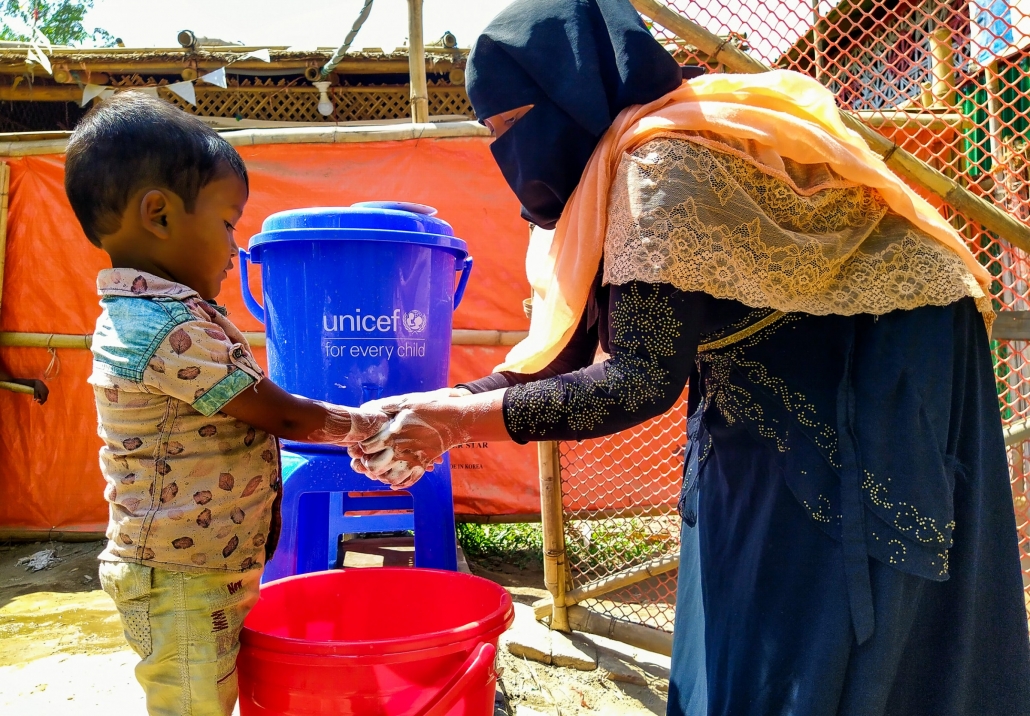
Caregiver washes a child’s hands in Camp 25 before entering a nutrition center. Credit World Vision International
What Attracts Investors
The same creditworthy requirements lie at the foundation of other successful projects.
Water.org, founded 12 years ago by Gary White and Matt Damon, works with finance partners to award low-income households micro-loans to fund water tap and toilet projects in 11 countries in Africa, Asia and South America. It’s based on the premise that giving people access to credit means they won’t have to wait for funding from government or a charity. According to its most recent 2020 inventory, Water.org raised $36 million that mobilized $2.5 billion in capital from its financial partners. WASH access improved for 31 million people. The average loan was $363, and 99 percent of borrowers have repaid, typically in 20 months.
Another finance option that is gaining more traction in WASH uses development and philanthropic funds to attract commercial investment—so-called “blended” finance.
The tool works for donors, foundations and governments interested in environmental and social priorities. It can attract impact investors who seek social goals but will accept lower financial returns than commercial investors typically tolerate. And blended finance attracts some commercial investors who may be interested in WASH because projects operate over longer horizons.
The mixing and matching proved attractive enough that from 2007 to 2018, $152 billion was mobilized for blended finance projects around the world, most of them for energy development, according to Convergence. From 2012 to 2017, though, $2.1 billion in blended finance was invested in WASH, according to data from the Organization for Economic Cooperation and Development.
Project by project, country by country, WASH project managers and their financiers are helping improve frontline practices and operations. Click To TweetUSAID INNOVATES
A third model for increasing and accelerating funding for projects is the $40 million WASH-FIN program USAID launched six years ago. The agency’s contractor, Tetratech, dispatches advisors to governments and utilities to help managers improve their operations, strengthen their creditworthiness and build finance development skills capable of tapping the coffers of major funders, including the more than $400 million that USAID annually spends on WASH.
Essentially, WASH-FIN is a grassroots support project for improving creditworthiness. It has achieved widely-applauded successes in Africa and Asia. In one of the most prominent examples, WASH-FIN advisors introduced Senegal’s bankers to the country’s 105 small sanitation service providers. Advisors then helped the service providers improve operations and write loan applications that delivered $4.3 million to three sanitation companies, the first the companies had ever received from Senegal banks.
In Nigeria, USAID advisors are helping to implement the country’s Water and Sanitation National Action Plan to modernize and expand the water and sanitation sectors to meet 2030 WASH goals. Specifically, advisors are assigned to help strengthen the governance and technical capacities of six State Water Boards, including payment collection.
One area of focus has been digital payment systems. “That has been important since March 2020 because of social distancing,” said Jeff Goldberg, the director of USAID’s Center for Water Security, Sanitation and Hygiene. “Since digital collection went up, revenue has really increased.”
With a global portfolio of 170 water investments representing nearly $30 billion in loans in 2019, the World Bank draws attention to its financing approaches everywhere it is active. At the moment, the bank is interested in recycling and monetizing human waste collection. It is recruiting a consultant to 1) assess the non-sewered sanitation market in Kenya, and 2) look at ways to attract the interest of private investors.
Bank authorities see an opening in fecal waste management that doesn’t depend on pipes and treatment plants. The need is urgent. Seven out of ten Kenyans do not have access to basic sanitation. The bank also is enthusiastic about the country’s determination. Kenyan authorities have set out to achieve universal sanitation by 2030.
The World Bank’s study should answer the most important question: Can toilets replace sewers as an effective and much less expensive revenue-generating approach to safely managing human wastes?
Sanergy, a growing waste recycling company in Nairobi, has already answered that question. With waste it collects from thousands of concrete and tile toilets in informal settlements, along with organic waste from restaurants and fresh markets, it creates recycled products including animal feed and fertilizer that generate new revenues. Sanergy has been so successful that in January AXA IM Alts, a unit of the French insurance company, announced it is financing Sanergy’s expansion to 10 cities across Africa and Asia by 2026.
“We believe that Sanergy provides a transformational solution to the health and environmental hazards caused by the improper management of waste in Africa and beyond,” Jonathan Dean, head of Impact Investing at AXA IM Alts, said in a statement.
Turning human waste into revenue-producing products, including energy, is attracting more interest than ever around the world. Another example is how the Dutch holding enterprise Safi Sana designs, constructs and operates waste-to-energy factories in developing countries. It receives tipping fees for waste, and sells energy and agricultural products from the recycling process to cover its costs.
In Accra, Ghana, Safi Sana operates a four-year-old factory that daily converts 40 tons of fecal sludge and organic waste into electricity and fertilizer. The sludge comes from public toilets where waste is collected in holding tanks that are emptied by privately owned vacuum trucks.
The recycling plant, which employs 28 people, was commissioned by the Municipality of Ashaiman and Ghana’s National Ministries of Energy and Agriculture. The African Development Bank and the Dutch Ministry of Foreign Affairs were the primary funders. The Bill & Melinda Gates Foundation awarded Safi Sana a $100,000 grant in 2019 for technology development.
“The recycling plant has improved the lives of thousands of people living and working in Ashaiman, generating social, economic and environmental benefits for the local community as a whole,” said the company in a statement. “Improved sanitation services and waste collection have led to a cleaner and healthier living and working environment.”
For these and other reasons, while the Covid-19 pandemic is a serious problem, it has not been a WASH game changer. The most serious effect is how the virus unsettled the balance in developing nations between making water available and affordable, and generating sufficient revenue to cover operating expenses.
In Ghana, for instance, the government enacted a universal free water mandate starting in April 2020 that was repeatedly extended through the end of March 2021. The policy helped slow the spread of the virus. It also meant that Ghana’s small water enterprises were unable to collect revenue.
“The maintenance reserves that these water enterprises have spent years building to cover future repairs and parts replacement have now been completely depleted,” said Gillian Winkler of Safe Water Network. While the network has been fortunate to secure philanthropic funding to cover day-to-day operating expenses for electricity, operator salaries and water treatment costs, she said, what’s ahead is uncertain. “There are real concerns about consumer willingness to pay once the mandate ends,” said Winkler, “especially in light of COVID’s impact on the household finances of low-income consumers that we aim to serve.”
Then Winkler added this: “Small water enterprises have done what we’ve needed to do to get through this crisis.”
Indeed, project by project, country by country, WASH project managers and their financiers are helping improve frontline practices and operations. It’s having an effect. According to the Joint Monitoring Program for Water Supply, Sanitation and Hygiene (JMP), the joint UNICEF and WHO program charged with monitoring WASH progress worldwide, 88 percent of the world’s people had access to safely managed drinking water as of 2017. Nearly 75 percent had access to safely managed and improved toilets that are not shared with other households. Both figures are rising steadily.
Though moving slower than desired and facing endless challenges, the sector is making the transition to more effective financing models. And that steady progress in WASH financing offers reason for optimism that in the not too distant future, all people will have access to clean water, safe sanitation, and hygiene.
Read the rest of the series here
Circle of Blue’s senior editor and chief correspondent based in Traverse City, Michigan. He has reported on the contest for energy, food, and water in the era of climate change from six continents. Contact
Keith Schneider

